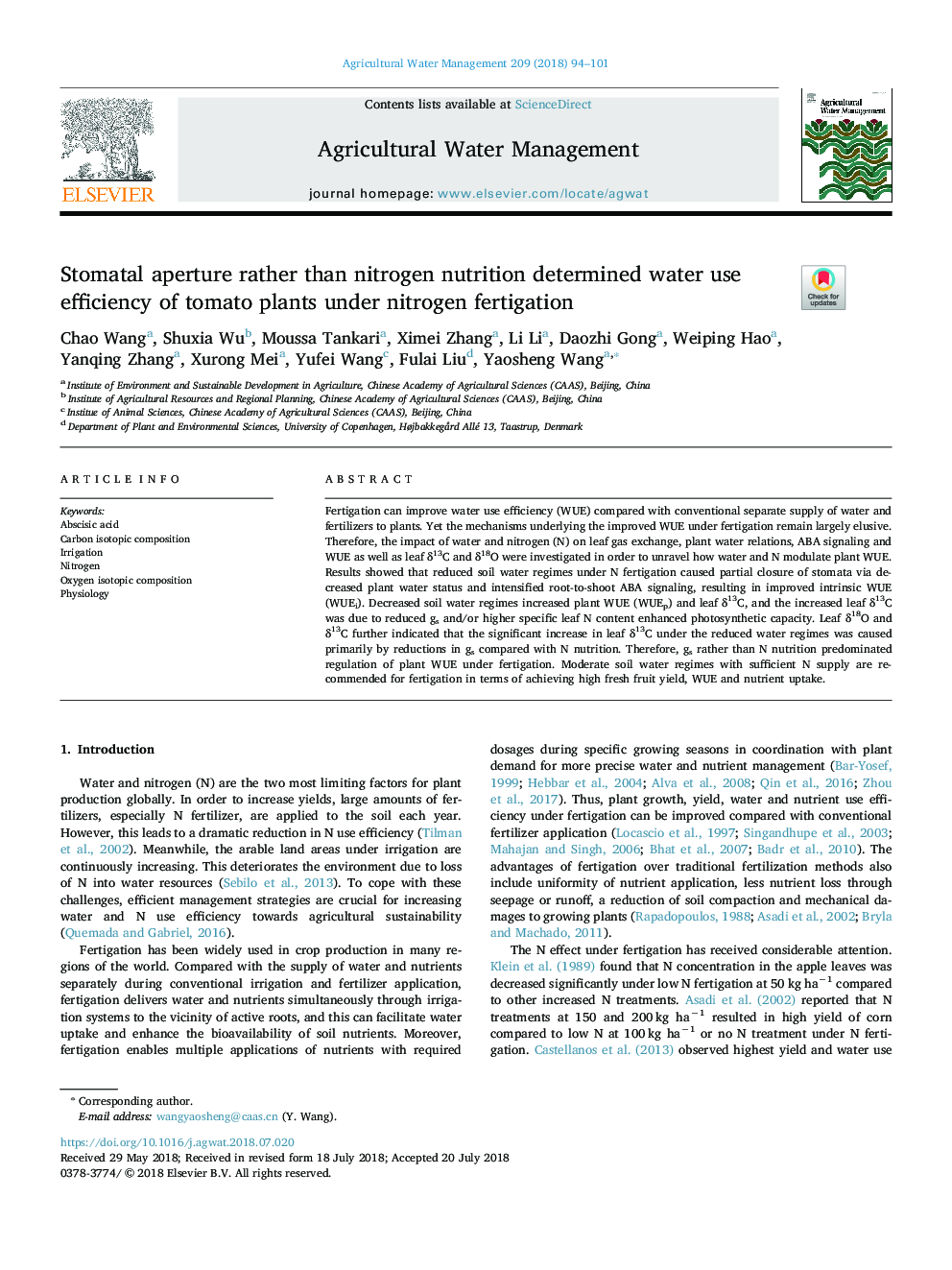| Article ID | Journal | Published Year | Pages | File Type |
|---|---|---|---|---|
| 8872738 | Agricultural Water Management | 2018 | 8 Pages |
Abstract
Fertigation can improve water use efficiency (WUE) compared with conventional separate supply of water and fertilizers to plants. Yet the mechanisms underlying the improved WUE under fertigation remain largely elusive. Therefore, the impact of water and nitrogen (N) on leaf gas exchange, plant water relations, ABA signaling and WUE as well as leaf δ13C and δ18O were investigated in order to unravel how water and N modulate plant WUE. Results showed that reduced soil water regimes under N fertigation caused partial closure of stomata via decreased plant water status and intensified root-to-shoot ABA signaling, resulting in improved intrinsic WUE (WUEi). Decreased soil water regimes increased plant WUE (WUEp) and leaf δ13C, and the increased leaf δ13C was due to reduced gs and/or higher specific leaf N content enhanced photosynthetic capacity. Leaf δ18O and δ13C further indicated that the significant increase in leaf δ13C under the reduced water regimes was caused primarily by reductions in gs compared with N nutrition. Therefore, gs rather than N nutrition predominated regulation of plant WUE under fertigation. Moderate soil water regimes with sufficient N supply are recommended for fertigation in terms of achieving high fresh fruit yield, WUE and nutrient uptake.
Keywords
Related Topics
Life Sciences
Agricultural and Biological Sciences
Agronomy and Crop Science
Authors
Chao Wang, Shuxia Wu, Moussa Tankari, Ximei Zhang, Li Li, Daozhi Gong, Weiping Hao, Yanqing Zhang, Xurong Mei, Yufei Wang, Fulai Liu, Yaosheng Wang,
